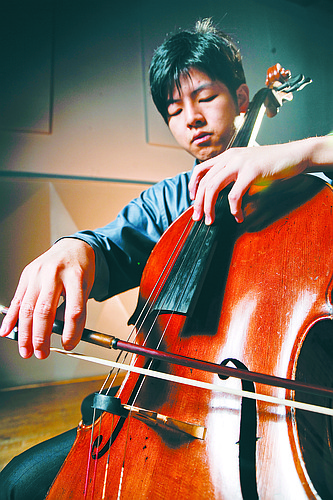- April 23, 2024
-
-
Loading

Loading

It’s not easy. Putting together a music festival must be one of the hardest jobs there is, because you’re not only trying to please an audience, you’re also trying to teach students. Sarasota has been in the fortunate position to have a chamber music festival for 47 seasons and, for most of that time, it’s flourished. But it’s been a struggle over the last few years because tastes and values are changing. Innovations in opera houses and concert halls have repositioned the emphasis on multi-media, novel presentations. At its worst, the packages have gotten in the way of the music. At its best, the packaging has kept the integrity of the performances while adding new, creative dimensions to the productions.
In a “teaching festival”— and there are many in this country, from Tanglewood, in Lenox, Mass., to Aspen, Colo., to Santa Fe, N.M., and Sarasota — the students must come first. In some cases these kids are having the extraordinary experience of playing works you and I have come to think of as “war horses.” Even non-performers can remember the first time they encountered the Mendelssohn octet and the Schubert “Trout.” So, imagine the joy and excitement a 17-year-old filled with potential feels when he sits, for the first time, surrounded by like-minded colleagues making that music.
But to bring this excitement and freshness of spirit to an audience is a subjective juggling act. So, my purpose here is not to second guess the directors of the festival but, rather, to ask some questions.
Who should be performing? When the students technically outshine much of the faculty, isn’t it time for some of the veterans to mentor and teach rather than play?
The Sarasota Music Festival is, for the most part, a chamber festival. Chamber music is an intimate art. So, why are the performers placed so far upstage that the great chasm of the Opera House apron puts a gulf between us and them?
Why are the house lights so low the audience can’t read their programs? I’m not one for perusing program notes during a performance, but I’d like to be able to glance down, occasionally, to remind myself who’s doing what. Sitting in a black hole with the musicians far, far away in a spotlight is not my idea of intimacy.
Then, there’s the audience. On one occasion this season, I was appalled to see multiple blue rectangles of light appearing during the performance. People were texting during the “Trout” (I had the temerity to approach one couple and ask what they’d been doing. The woman, a self-described classical flutist, said she was texting her husband — the man sitting next to her. “Was it about the music?” I asked. “No,” she said. “I thought he might want to find a more comfortable seat ... ”)! And then there was the woman who came decked out in what surely were tambourines on her wrists. She jangled through Schubert until a long-legged and lithe student, sitting a few rows in front of her, actually clambered over several seats and stopped the annoying incidental music with a glare.
There are some things we can control and others that are beyond us. I have more questions than I have answers. I do know, however, this is a festival worth saving. The music is great. The students are fantastic. It’s time to step back and take a fresh look at the presentation and the presenters.